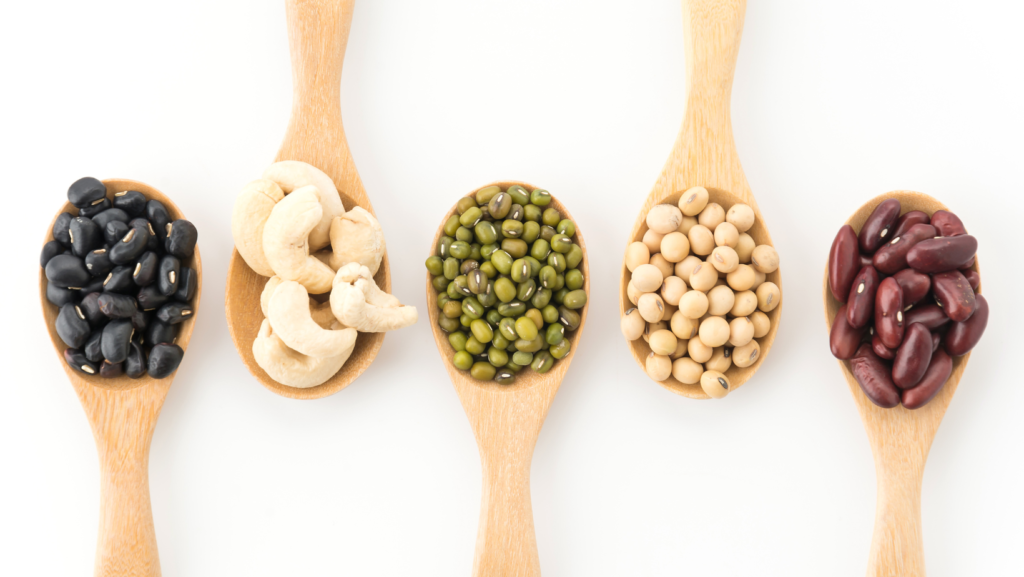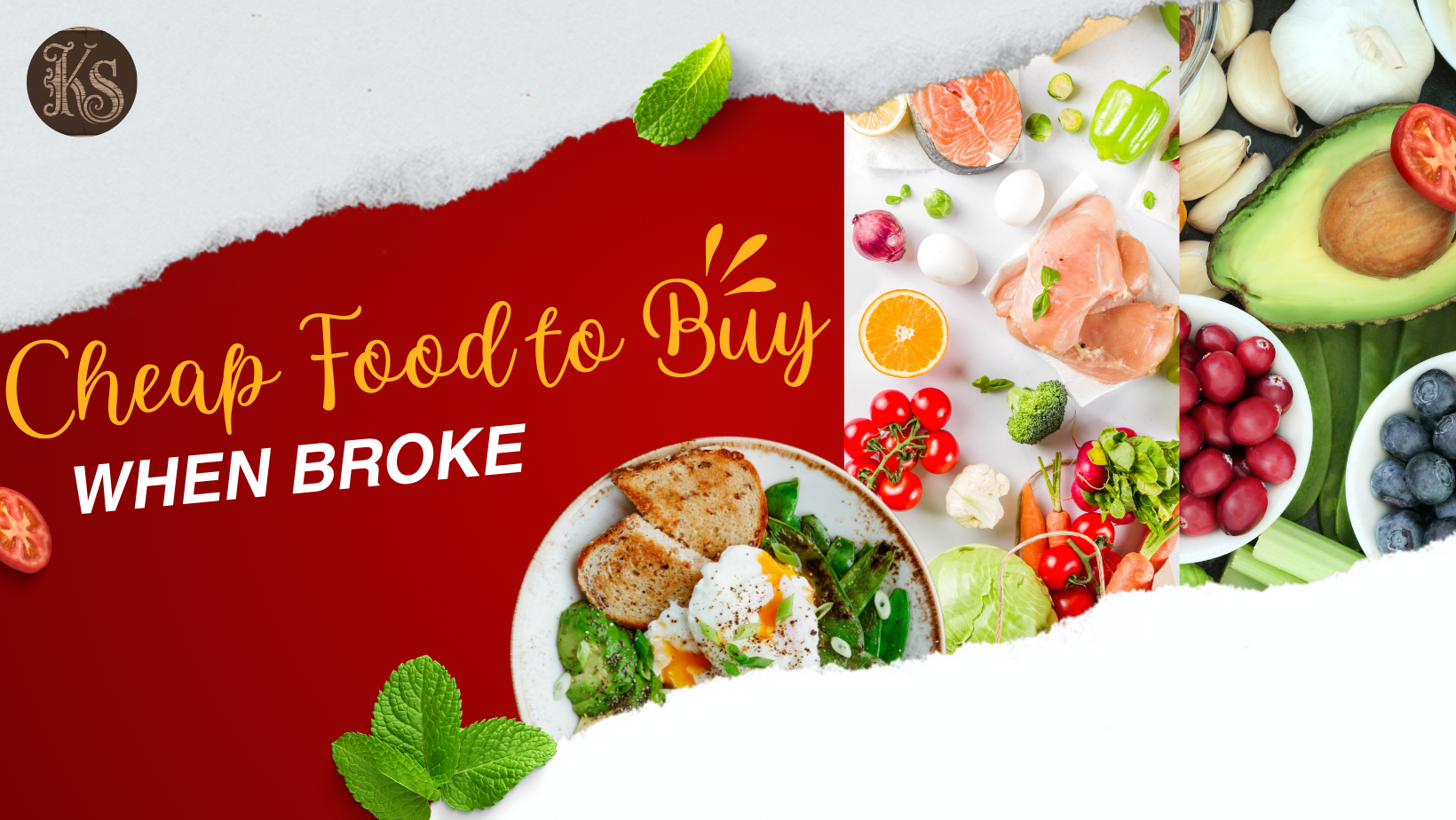Best Cheap Food to Buy When Broke: Affordable & Nutritious Options

When you’re running low on funds but need to make sure you’re still eating healthy and keeping your energy up, you don’t have to resort to instant noodles alone! There are plenty of affordable food options that are filling, nutritious, and versatile, making them the perfect choices when you’re on a tight budget.
In this blog, we’ll go over the best cheap food items to buy when you’re broke, and how to incorporate them into your daily meals. We’ll also include helpful tips and a downloadable resource that can guide you in making smart, budget-friendly shopping decisions.
Table of Contents
- Beans: The Protein Powerhouse
- Rice: Affordable and Versatile
- Pasta: Quick, Easy, and Filling
- Oats: A Healthy and Budget-Friendly Breakfast
- Eggs: Nutrient-Rich and Cheap
- Canned Vegetables: Easy and Long-Lasting
- Frozen Fruits and Vegetables: A Great Alternative
- Peanut Butter: The Affordable Protein Boost
- Potatoes: Cheap and Satisfying
- Meal Planning and Budgeting Tips
- Conclusion
1. Beans: The Protein Powerhouse

Why they’re great: Beans are loaded with protein, fiber, and essential nutrients. Whether canned or dried, they are one of the cheapest sources of protein available.
How to use: Add them to soups, salads, stews, or make a bean burrito. You can even blend them to make a hummus-like dip.
Price estimate: $1-$3 per pound (depending on the type).
Resource:
| Type of Bean | Approx. Price (per lb) | Cooking Time | Nutritional Value (Protein per cup) |
|---|---|---|---|
| Black Beans | $1.25 | 1 hour | 15 grams |
| Kidney Beans | $1.10 | 90 mins | 13 grams |
| Lentils | $0.90 | 30 mins | 18 grams |
2. Rice: Affordable and Versatile
Why it’s great: Rice, especially brown rice, is affordable and serves as a perfect base for many meals. It’s filling and pairs well with nearly any protein or vegetable.
How to use: Combine it with beans for a complete protein meal, use it in stir-fries, or make a budget-friendly fried rice with leftover vegetables and eggs.
Price estimate: $0.70 per pound for white rice; $1.50 per pound for brown rice.
Resource:
| Type of Rice | Approx. Price (per lb) | Cooking Time | Calories per Cup (Cooked) |
|---|---|---|---|
| White Rice | $0.70 | 15-20 mins | 206 |
| Brown Rice | $1.50 | 40 mins | 216 |
3. Pasta: Quick, Easy, and Filling
Why it’s great: Pasta is not only inexpensive but also extremely versatile. You can use it in countless dishes, from simple tomato-based meals to more elaborate casseroles.
How to use: Serve with a basic tomato sauce, garlic, and olive oil for a cheap yet delicious meal. Add vegetables or canned tuna for an extra nutritional boost.
Price estimate: $1 per pound.
Resource:
| Type of Pasta | Approx. Price (per lb) | Cooking Time | Nutritional Value (Protein per cup) |
|---|---|---|---|
| Spaghetti | $1.00 | 8-10 mins | 7 grams |
| Penne | $1.10 | 9-11 mins | 7 grams |
4. Oats: A Healthy and Budget-Friendly Breakfast
Why they’re great: Oats are one of the best budget-friendly breakfast options. They are high in fiber and can be prepared in various ways, such as overnight oats, porridge, or baked into bars.
How to use: Prepare overnight oats with milk and fruits, or cook a warm bowl of oatmeal with peanut butter for added protein.
Price estimate: $1.50 per pound.
Resource:
| Type of Oats | Approx. Price (per lb) | Cooking Time | Calories per Cup (Cooked) |
|---|---|---|---|
| Rolled Oats | $1.50 | 5-10 mins | 150 |
| Instant Oats | $1.20 | 2-3 mins | 130 |
5. Eggs: Nutrient-Rich and Cheap
Why they’re great: Eggs are a budget-friendly source of high-quality protein, vitamins, and minerals. They can be prepared in numerous ways, making them perfect for any meal.
How to use: Scramble them for breakfast, boil them for salads, or make a vegetable-loaded omelet for dinner.
Price estimate: $2-$3 per dozen.
Resource:
6. Canned Vegetables: Easy and Long-Lasting
Why they’re great: Canned vegetables are often cheaper than fresh ones and have a long shelf life, making them ideal when you’re on a budget. Just make sure to check for added salt.
How to use: Mix them into soups, casseroles, or serve them as a side dish with rice or pasta.
Price estimate: $0.50-$1 per can.
7. Frozen Fruits and Vegetables: A Great Alternative
Why they’re great: Frozen produce is just as nutritious as fresh produce, and it’s often cheaper. You can use frozen vegetables in stir-fries or soups, and frozen fruits in smoothies or desserts.
How to use: Add frozen vegetables to stir-fries, or use frozen berries to top your oatmeal.
Price estimate: $2-$3 per pound.
8. Peanut Butter: The Affordable Protein Boost
Why it’s great: Peanut butter is an affordable and versatile protein source. It’s rich in healthy fats and perfect for a quick snack or addition to a meal.
How to use: Spread it on toast, add to smoothies, or mix into oatmeal for extra flavor and nutrition.
Price estimate: $1.50-$3 per jar.
9. Potatoes: Cheap and Satisfying
Why they’re great: Potatoes are one of the cheapest and most versatile food options. They are filling and can be used in countless recipes.
How to use: Make baked potatoes, homemade fries, mashed potatoes, or add them to soups and stews.
Price estimate: $0.50 per pound.
Resource:
10. Meal Planning and Budgeting Tips
To make the most of your food budget, consider planning your meals ahead of time. Creating a shopping list based on sales and discounts, and sticking to affordable staples like those mentioned above, can stretch your dollars further.
| Tip | Details |
|---|---|
| Plan meals for the week | Planning reduces impulsive purchases and helps you focus on buying just what you need. |
| Cook in bulk | Preparing meals in bulk can save time and money. Store leftovers for future meals or freeze them. |
| Use store brands | Store brand items are often much cheaper than name brands and are typically just as good. |
| Avoid processed snacks | Instead of buying processed snacks, focus on whole foods that fill you up longer. |
| Compare unit prices | Always check the unit price (price per pound or ounce) to make sure you’re getting the best deal. |
Conclusion
Being broke doesn’t mean you need to sacrifice good nutrition. With a little bit of planning, you can eat healthy, filling meals without breaking the bank. By focusing on inexpensive staples like beans, rice, and potatoes, and making use of frozen and canned produce, you can maintain a balanced diet on a tight budget.
Related Resources:
By following the suggestions above, you’ll be able to make smarter food choices even when your budget is limited.

